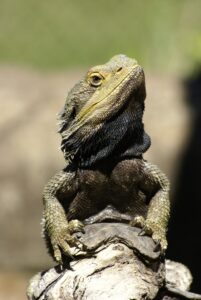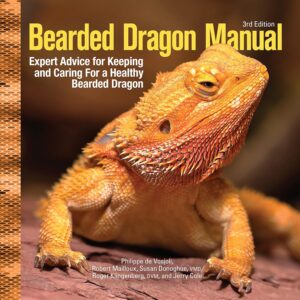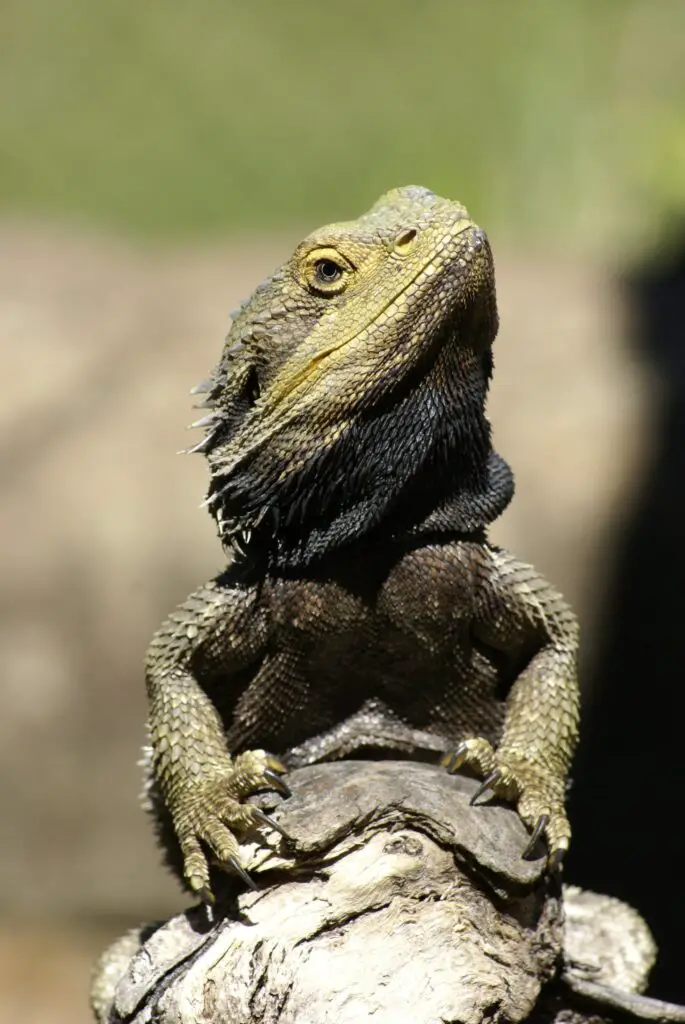How to tell the gender of a bearded dragon
How to tell the gender of a bearded dragon: Bearded dragons, scientifically known as Pogona vitticeps, have become increasingly popular as reptilian pets in recent years. These fascinating creatures are native to the arid regions of Australia and have captured the hearts of reptile enthusiasts worldwide.
With their unique appearance, docile nature, and manageable size, bearded dragons are often sought after by both novice and experienced reptile keepers. When it comes to caring for these scaly companions, understanding their gender is crucial.
Determining the gender of a bearded dragon serves several purposes that contribute to their overall well-being. One significant reason for identifying their gender is breeding.
Breeding bearded dragons requires a male-female pair, and knowing the sex of your dragon will help ensure successful reproduction. Another important aspect is naming.
Many pet owners like to give their bearded dragons names that match their gender or reflect specific traits associated with males or females. By accurately determining the sex of your pet, you can choose a name that aligns with its identity.
A fascinating world awaits: Bearded Dragons as Pets
 Bearded dragons have become popular pets due to their captivating appearance and relatively low maintenance requirements compared to other reptiles. With an average length ranging between 18-24 inches (45-60 cm) from head to tail and a life span of 10-15 years in captivity, they make long-term companions for dedicated owners. Their unique physical features contribute to their charm; they possess spiky scales on their throat resembling a beard when puffed up—hence the name “bearded dragon.” These beard-like scales play a vital role during displays of aggression or courtship rituals.
Bearded dragons have become popular pets due to their captivating appearance and relatively low maintenance requirements compared to other reptiles. With an average length ranging between 18-24 inches (45-60 cm) from head to tail and a life span of 10-15 years in captivity, they make long-term companions for dedicated owners. Their unique physical features contribute to their charm; they possess spiky scales on their throat resembling a beard when puffed up—hence the name “bearded dragon.” These beard-like scales play a vital role during displays of aggression or courtship rituals.
Determining Gender: The Key to Proper Care
How to tell the gender of a bearded dragon
While the gender of a bearded dragon may not be immediately apparent, it is crucial for providing appropriate care. One important reason for determining the sex of your dragon is to create an ideal living environment, specifically in terms of temperature and lighting requirements. For instance, male bearded dragons tend to emit higher levels of testosterone, which can affect their behavior and metabolic needs.
By identifying the gender, you can tailor their habitat conditions accordingly, ensuring optimal health and well-being. Furthermore, knowing the sex becomes essential during medical check-ups and preventive care.
Male and female bearded dragons may have different susceptibility to certain diseases or health concerns. Thus, understanding their gender helps veterinarians provide targeted treatments or preventive measures.
General Indicators of Gender in Bearded Dragons
Size and Body Shape Differences between Males and Females
How to tell the gender of a bearded dragon: When it comes to determining the gender of bearded dragons, size and body shape are essential indicators. Males typically exhibit larger heads and bodies compared to females. This is partly due to their need for physical dominance during territorial displays and courtship rituals.
The larger head size in males is attributed to the presence of hemipenal bulges, which we will discuss in detail later. In contrast, female bearded dragons are usually smaller and more slender in appearance.
Their body structure is designed for efficiency rather than display, as they do not engage in aggressive territorial behaviors like the males do. This size difference becomes more apparent as they reach adulthood, with mature females often measuring approximately 16-20 inches long from snout to tail-tip, while males can grow up to 22-24 inches or sometimes even longer.
It should be noted that determining gender based solely on size can be challenging when the dragons are young or still growing, as sexual dimorphism may not be fully developed until they reach a certain age or size threshold. In such cases, it becomes necessary to consider other factors such as physical characteristics or behavioral cues for a more accurate determination of their gender.
Males Tend to Have Larger Heads and Bodies Compared to Females
 One distinctive feature that sets male bearded dragons apart from their female counterparts is their larger head size. Male dragons often possess broader heads with prominent jaw muscles that give them a robust appearance compared to females.
One distinctive feature that sets male bearded dragons apart from their female counterparts is their larger head size. Male dragons often possess broader heads with prominent jaw muscles that give them a robust appearance compared to females.
This characteristic serves multiple purposes; not only does it aid in establishing dominance during competition with other males but also assists during courtship by attracting potential mates through visually striking displays. Furthermore, male bearded dragons generally have bulkier bodies than females.
This increased body mass contributes both aesthetically and functionally to their overall appearance. The larger body size gives males an imposing posture, a characteristic that plays a crucial role in asserting dominance and securing territory.
This feature becomes more evident as they reach sexual maturity and develop secondary sexual traits like hemipenal bulges, which signify their ability to breed. In contrast, female bearded dragons possess comparatively smaller heads and bodies.
Their heads are more streamlined, allowing them to maneuver quickly and efficiently in search of food or during escapes from potential threats. Additionally, the leaner body shape of females reflects their reproductive biology, as they need to allocate energy towards producing eggs rather than developing showy physical attributes.
Overall, the disparity in head and body size between male and female bearded dragons is an important general indicator of their gender. However, it is essential to consider other factors for a comprehensive understanding of their sex due to individual variations within each gender and the potential influence of age on sexual dimorphism.
External Physical Characteristics: How to tell the gender of a bearded dragon?
Hemipenal Bulges (Males)
Unraveling the enigmatic world of bearded dragon genders requires a keen eye for subtle external physical characteristics. One such characteristic unique to male bearded dragons is the presence of hemipenal bulges nestled at the base of their tails.
These bulges serve as unmistakable indicators of their masculinity. Hemipenal bulges are small, round protrusions that can be felt beneath the skin and are located just above the ventral scales.
To identify these telltale signs of maleness, gently palpate along the base of your bearded dragon’s tail. Apply light pressure with your fingertips as you move your way down towards the tail’s base.
With patience, you may feel two distinct round bulges in this area if your dragon is a male. Keep in mind that some young males may not have fully developed hemipenal bulges, so it’s essential to take age into consideration when assessing this characteristic.
Pores on Femoral Pores (Males)
As we delve deeper into gender determination, an intriguing aspect emerges – femoral pores found on the undersides of a bearded dragon’s thighs reveal further insights into their gender identity. These tiny pores serve as both communication tools and markers for male dragons.
The femoral pores themselves appear as small pinpricks scattered along each side of a male dragon’s ventral scales within their thigh regions. While these pores can exist in females too, they tend to be less pronounced and disperse over a smaller area compared to males.
Observing potential secretions from these femoral pores can provide additional confirmation regarding gender identification. Gently squeeze or press against these areas using clean fingers or a soft cloth; this should elicit moderate pressure without causing any discomfort to your reptilian companion.
If your pet is a male, you may notice a waxy substance being secreted from these pores. It’s important to note that the presence of secretions can vary depending on factors such as age, overall health, and reproductive status.
Unraveling the gender mysteries surrounding bearded dragons demands attention to external physical characteristics. The presence of hemipenal bulges at the base of their tails serves as an unmistakable indicator of maleness.
Meanwhile, femoral pores found on their thighs provide further clues when observed for secretions. By examining both these features with care and precision, one can navigate the complex world of bearded dragon genders with confidence and accuracy.

Behavioral Differences between Male and Female Bearded Dragons
Head Bobbing (Males)
Bearded dragons are fascinating creatures, and one of the distinctive behaviors exhibited by male individuals is head bobbing. This behavior serves as a means of communication during courtship or territorial displays. When a male bearded dragon encounters another dragon, it may begin to rhythmically bob its head up and down.
This ritualistic behavior is intended to convey dominance or initiate courtship with a receptive female. The rhythmic nature of head bobbing creates visual signals that can be observed by other dragons.
During territorial displays, head bobbing among males becomes more prominent. It acts as a clear warning sign to intruders that they are entering another dragon’s territory.
The intensity and frequency of head bobbing may vary depending on the situation and the individual dragon’s temperament. It is important to note that not all male dragons will display this behavior consistently, and some may exhibit it more frequently than others.
When witnessing your bearded dragon engage in head bobbing, it is crucial to monitor their overall behavior and body language for additional cues that might indicate their intentions or emotional state. By paying attention to this unique behavioral characteristic, you can gain valuable insights into your male bearded dragon’s social interactions and reproductive tendencies.
Arm Waving (Females)
While males showcase their dominance through head bobbing, female bearded dragons have their own captivating behavior: arm waving. Arm waving is an intriguing display often seen when females are approached by males or during courtship rituals. It involves lifting one of their front limbs in a slow waving motion resembling a gentle greeting gesture.
The purpose behind female arm waving is multifaceted: it can indicate acceptance of a male’s advances during courtship or serve as an attempt to communicate submission and avoid aggression from an assertive male. This behavior can also be observed when a female is gravid (carrying eggs) and seeking an appropriate nesting spot, as a way to signal her receptivity to potential mates.
Arm waving in females is characterized by controlled and deliberate movements, usually accompanied by a calm demeanor. Occasionally, arm waving may escalate into more pronounced displays such as head bobbing or gaping, which are indicative of potential conflict or rejection of a male’s advances.
Understanding the significance of arm waving in female bearded dragons provides valuable insights into their reproductive behavior and social dynamics. By paying attention to the subtle nuances of this unique behavior, you can better comprehend the complexities of their interactions within their habitat and ensure their optimal well-being.
Observing the distinct behaviors displayed by male and female bearded dragons allows us to gain deeper understanding of their social structure and reproductive tendencies. Head bobbing serves as a dominant behavior displayed primarily by males during courtship or territorial displays.
On the other hand, arm waving is seen in females as a means of communication during courtship or when approached by males. These behaviors offer invaluable insights into the fascinating world of bearded dragon interactions, enriching our knowledge and enhancing our ability to provide appropriate care for these captivating reptiles.
Specialized Techniques for Determining Gender
Probing Method
 The probing method is a specialized technique that experienced reptile breeders and veterinarians often employ to determine the gender of bearded dragons. This method involves using a small probe, typically made of plastic or metal, and gently inserting it into the cloaca, which is the vent located at the base of the tail. The cloaca serves as a common opening for both waste elimination and reproductive functions in reptiles.
The probing method is a specialized technique that experienced reptile breeders and veterinarians often employ to determine the gender of bearded dragons. This method involves using a small probe, typically made of plastic or metal, and gently inserting it into the cloaca, which is the vent located at the base of the tail. The cloaca serves as a common opening for both waste elimination and reproductive functions in reptiles.
By carefully inserting the probe into this opening, experts are able to discern whether the bearded dragon is male or female based on the depth of insertion. The depth of penetration can reveal important information about the gender.
Male bearded dragons have a longer cloaca, which allows for deeper probe insertion. In contrast, female bearded dragons have shorter cloacas, resulting in shallower probe insertion.
It’s crucial to note that this procedure should only be carried out by trained professionals or individuals who have received proper guidance from experts. Care should always be taken to ensure the safety and well-being of these delicate creatures.
To sum up how to tell the gender of a bearded dragon
Determining the gender of a bearded dragon can provide valuable insights into their care and breeding potential. While there are general indicators such as size and body shape differences between males and females, specialized techniques like probing offer a more accurate means of sex determination. However, it’s vital to remember that these methods should only be performed by experienced individuals or under professional supervision.
Understanding your bearded dragon’s gender not only aids in appropriate naming but also enables you to cater to their specific needs regarding diet, housing conditions, and interaction with other dragons if you plan on breeding them. By employing proper techniques with sensitivity towards these remarkable creatures, we can ensure their well-being while fostering an enriching experience for both caretakers and their scaly companions.
Further Reading:
- Carolina Custom Cages Terrarium Review
- 8 Best Basking Rocks for Beardie: What Is the Best Choice?
- 10 Best Thermometers for Beardie: How to Choose the Best One?
- 5 Best Beardie Lighting Setups for Beardie Lovers
- 9 Best Heat Lamps for Beardie: Natural Habitat Provided


